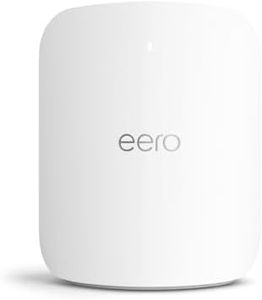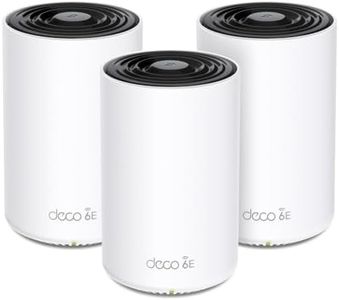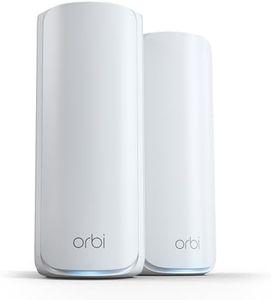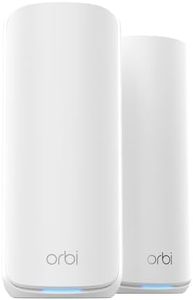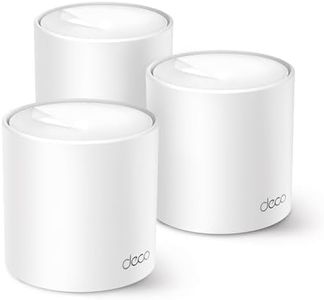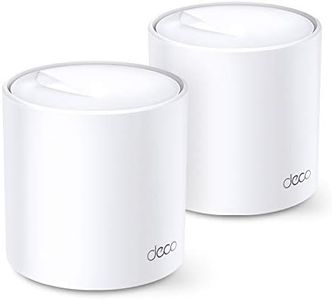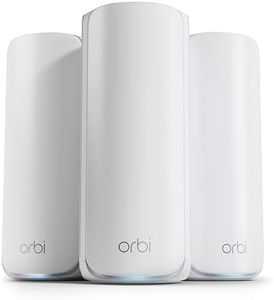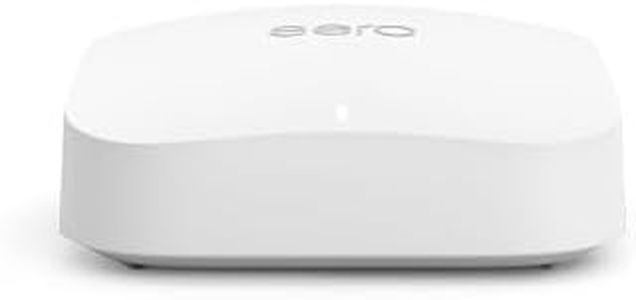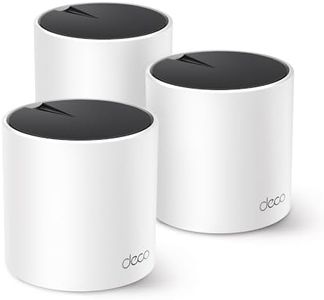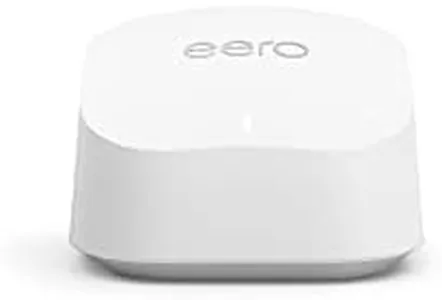We Use CookiesWe use cookies to enhance the security, performance,
functionality and for analytical and promotional activities. By continuing to browse this site you
are agreeing to our privacy policy
10 Best Mesh Wi-Fi Systems
From leading brands and best sellers available on the web.Buying Guide for the Best Mesh Wi-Fi Systems
Choosing the right mesh Wi-Fi system can make a huge difference in the quality and reliability of your home internet connection, especially if you have a large or multi-story home where a single router can't cover every corner. These systems use multiple devices (called nodes) to spread Wi-Fi more evenly, helping to eliminate dead spots and providing a seamless connection as you move from room to room. The best approach is to match the system's capabilities to the size of your home, number of devices you use, and your typical internet activities.Coverage AreaCoverage area tells you how much space the mesh system is designed to cover with strong Wi-Fi. It's typically measured in square feet or meters and is important because a system that's too small won't eliminate dead spots, while one that's too large can be overkill. Small apartments or homes (under 2,000 square feet) usually do well with a basic two-node system; mid-sized homes (2,000–4,000 square feet) might require an extra node; large or multi-story homes (over 4,000 square feet) benefit from higher-end systems with three or more nodes. To pick the right one, estimate the size of the area you need covered and consider obstacles like thick walls and floors.
Number of NodesThe number of nodes refers to how many individual mesh units come with your system. More nodes can spread Wi-Fi further and help overcome tricky layouts, so this spec is important for ensuring every spot in your house gets a good signal. Systems generally come with two or three nodes, and you can sometimes add more later. For smaller homes, two nodes may be enough; for larger homes or those with unusual layouts (like L-shapes or lots of walls), more nodes may be better. Think about your home's physical layout—each floor or distant section can benefit from its own node.
Maximum Speed (Wireless Standard)This tells you the top wireless speed supported by the mesh system, usually tied to the Wi-Fi standard (like Wi-Fi 5/802.11ac or Wi-Fi 6/802.11ax). It's key because faster speeds support more devices and demanding tasks like streaming or gaming. Wi-Fi 5 systems tend to offer lower maximum speeds, which may be fine for basic internet use, while Wi-Fi 6 models support higher speeds and more devices at once, making them ideal for busy households or those with many smart devices. Consider how many devices are in use and whether you do activities like 4K streaming or online gaming—if yes, faster standards are preferable.
BackhaulBackhaul describes how each node communicates with the others—it can be wireless or wired (Ethernet). The type and quality of backhaul affects the speed and consistency of your network. Some mesh systems have a dedicated wireless band (tri-band systems) just for backhaul, which helps maintain high speeds even when many devices connect at once. Wired backhaul is the most stable and fastest but requires Ethernet cables between nodes. If you prioritize top speeds or have many users/devices, look for dedicated or wired backhaul options; for simple setups, standard wireless backhaul usually works fine.
Ease of Setup and ManagementThis is about how simple it is to install and control the mesh system, often using a smartphone app. It's important because an easy setup saves time and reduces frustration, while a good app can help with troubleshooting, adding devices, or setting up parental controls. Some systems guide you step-by-step and offer helpful features like automatic updates. If you're not very tech-savvy or want easy ongoing control (like pausing Wi-Fi for kids), choose a system known for user-friendly setup and clear management tools.
Device and Feature SupportDifferent mesh systems support different numbers of connected devices and offer features like parental controls, guest networks, or smart home integration. This matters if you have many phones, tablets, smart TVs, or gadgets. Some systems are better equipped for busy homes or those wanting to integrate smart home controls, while others are more basic. Think about your household’s needs—lots of devices and advanced features mean higher-end systems are a better fit, while simpler needs can be met with entry-level systems.

